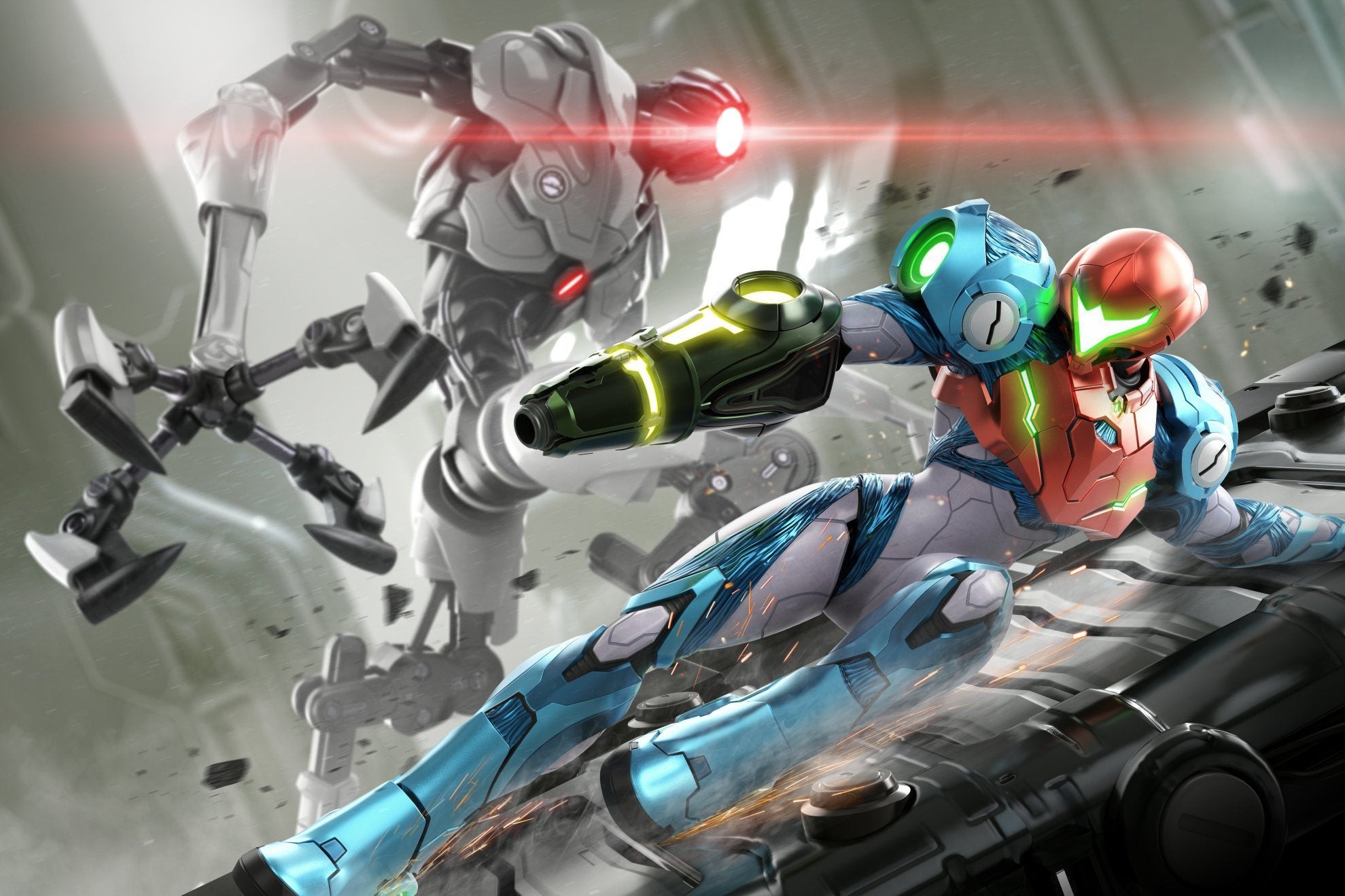On the lists of “games you’ll likely never play,” one Nintendo game has made frequent appearances: Metroid Dread. The supposed sequel to the beloved Metroid Fusion, released on Game Boy Advance in 2002, was first rumored in early 2005 to be readying for launch on the then-new Nintendo DS. But months later, the rumors changed from “coming soon” to “canceled,” dashing fans’ hopes of a Fusion follow-up.
Nintendo never confirmed nor denied the existence of the game at the time, let alone that it had been in any kind of development; in later years, when announcing new Metroid games, Nintendo would clarify that the new project had nothing to do with the storied Dread. But video-game fans subsist on leaks and gossip and morsels of possibility, so Metroid Dread became a sort of Holy Grail for Nintendo-heads: a fabled new adventure in the saga of Samus Aran, a space bounty hunter whose games are defined by their non-linear cave-excavating, grotesque monsters, and laser beam-filled action.
In the years that followed, a stark change happened with the Metroid series, lending credence to the idea that Metroid Dread was, indeed, Metroid Dead. Coinciding with the launch of Metroid Fusion was Metroid Prime, a GameCube release that shifted away from the trademark 2D, side-scrolling gameplay. Prime followed the mold of the increasingly popular first-person shooter genre, putting players in Samus’ shoes and giving them a full, 3D world to maneuver through. Prime was incredibly well-received, especially by fans in the West who had more readily embraced shooters than had those in Nintendo’s native Japan.
It may be unfair to blame Metroid Prime on the demise of Metroid Dread. But it’s telling that Metroid Fusion never received its follow-up, a game that would bear the same style and aesthetic as all its 2D forebears. Nintendo took Metroid into other directions, with two more acclaimed Prime games, a few lackluster spinoffs, and another notable 3D experiment with the property that didn’t bode quite so well. An increased dependence on Western or third-party developers to help out with the Metroid games, like Retro Studios, which worked on Prime and several of its sequels, seemed to indicate that Nintendo was re-envisioning the series for a modern audience and leaving older fans behind. By the time we reached this month, June 2021, more than 18 years and a half dozen sequels have gone by since Metroid Fusion, nearly all of them first-person shooters, give or take a remake or a Metroid Prime Pinball.
But this week, the unthinkable happened. During Nintendo’s 40-minute E3 presentation on Wednesday, during which the company announced numerous games coming this year to the Nintendo Switch, it made a surprise announcement. Its marquee title this fall would be … Metroid Dread, coming to the Switch in October. It would be the first new, 2D game in Metroid’s mainline series in nearly two decades, and it looked exactly as fans had hoped. When Nintendo punctuated the game’s trailer—which kicked off with the simple title Metroid 5—with the logo for Metroid Dread, the internet broke out into collective cheers. The game was real, just as they’d hoped. Old-school Metroid was back.
With Metroid Dread finally confirmed, alive, and on the horizon, we now have a chance to ask: What took Nintendo so long to make it? Were those rumors about its existence true to begin with? Or did Nintendo just name the game Dread as a tease to those longtime believers? In a select, private press demo and interview event held following the game’s reveal, producer Yoshio Sakamoto offered an explanation.
“At the time we came up with the idea [in 2005], the hardware wasn’t there, so we had to put this game on hold,” Sakamoto said, referring to the Nintendo DS console’s perhaps unsatisfying specs. “We started again [later on], but we stopped again for the same reasons.”
But the idea to continue Samus’ story in the same vein in which it had begun—that is to say, in two dimensions, not three—did not leave Sakamoto’s mind. It wasn’t until nearly 15 years after Metroid Fusion’s release that he felt as though Metroid Dread was feasible, thanks, he said, to a new development partner: Mercury Steam Entertainment, which Nintendo conscripted to work on a Nintendo 3DS remake of the classic Game Boy game Metroid 2. Sakamoto was satisfied with how the Spanish developer was able to convey his dream of a more advanced, detailed world for Samus to fight through without sacrificing those older gameplay aspects fans glom onto. This team would be the one to make Metroid Dread a reality.
Could the release of Metroid Dread be a double-edged sword, however? Soon after its reveal, Nintendo noted that the game would wrap up Metroid’s “five-part saga.” Perhaps after all that waiting, Nintendo was bringing Metroid as a whole to a close?
That’s, unsurprisingly, not so. Metroid Prime 4 remains in the works for Nintendo Switch, after all. But that may not necessarily be a comfort for the series’ 2D future, considering it took this long for a new Metroid in that mode. Sakamoto made sure to mitigate any fears fans might have that Metroid—OG-style Metroid—is going back into the toy box forever.
“What this game represents is a bit of a pause for a new start to something else,” he said of the concept that this brings Samus’ story to some kind of conclusion. “Nobody wants the Metroid series to end, and we know that, but we just want people to know that there is some kind of new episode that is waiting in the works.”
Now, will that “new episode” be one we get to play anytime soon? Nintendo fans can only hope that it will take less than 18 years to arrive, or that if it does, it’ll be worth the wait.
